Ideally, we would have liked a break in the run of ancient Roman ruin visits. It is not our intention to punish ourselves or our dedicated blog readers with a steady dose of prehistoric rocks. Perhaps a safari or a shadow puppet play would have been the ideal buffer that would have cleansed the palate before beginning the battle anew. But this is not the African savanna or the Far East where such alternative experiences are on offer. If we possessed the gift of time travel perhaps we could have brought to you live coverage of the latest series between lions and Christians at one of these venues. But this is not to be.
If one has to accept the fact that a third consecutive day of Roman ruins is some sort of mandatory experience that one must go through, then Ephesus is not a bad choice for the third day. In fact, it is a most excellent choice. Here we have something where the visitor can not only come close to historical structures that have survived intact (or at least lying as rubble near where they once stood), but also experience the feeling of an entire ancient city as a whole entity. Complete with markets, theatres, roads, housing complexes, toilets, libraries and temples. If one has trouble relating to the ghosts of historical Roman figures (Caesar, Anthony, Cleopatra) who had visited here, one can turn to other personages like St. Paul, St. John and the Virgin Mary who are also associated with Ephesus.
Located just 3 km from the modern town of Selcuk (about 60 km south of Izmir, Turkey's 3rd largest city), Ephesus once had a population of a quarter million in 1st century BC, making it the second largest city in the empire after Rome. It achieved its peak during the 1st century AD. Emperor Augustus made it capital of Rome's Asian province. The apostle Paul lived in Ephesus from 52-54 AD. From here, he wrote epistles to budding Christians all over the world. He denounced false idol worship and got into trouble with the pagan cult of Artemis. The idol carvers did not like this and a rabble rousing mob seized Paul's Christian friends. A riot was barely avoided and everyone managed to survive. St. John arrived in 90 AD to spread Christianity to Asia and he may even have escorted the Virgin Mary to Ephesus.
Before the Romans arrived, Ephesians also participated in the Ionian revolt against Persian rule in the Battle of Ephesus (498 BC), an event that instigated the Greco-Persian wars. They allied with Athens and Sparta to defeat the Persians and formed the Delian League, a precursor to modern war alliances.
One also got a good sense of the geographic significance of Ephesus in those times. Located next to the Aegean sea with the Harbor Road directly linking the city's glitzy main drag to the outside world, it served as the West end of the Silk Road from the Far East.
The good times could not last forever and a succession of events ended Ephesus' glory days. In 263 AD, the Barbarians looted Ephesus. Later, the Byzantine empire took over but the harbor kept silting up. Trade suffered and the city fell into decline. The Meander river, which emptied to the Aegean near the city is also blamed for the silting after it changed course constantly. The term 'meander' in modern usage comes from this river.
Excavations in the 1860s by British and German archaeologists brought its past glory to the attention of modern people and now tourists with digital cameras trample over the sacred paths of ancient Ephesus where ceremonial processions were once held. Controversially, concerts have been staged at the Great Theatre in recent decades featuring the likes of Sting, Diana Ross and Pavarotti.
Near the main site is the Temple of Artemis, one of the Seven Ancient Wonders of the World, the largest structure in the world as described by Pausanias. It was first burned down by a lunatic, Herostratus in 356 BC (the world's first claimant to the Warholian concept of Fifteen Minutes of Fame). The Ephesians turned down the offer of Alexander the Great to rebuild it and chose to do it on their own. Following the Edict of Thessalonica by Theodosius in 401 AD, it was destroyed by a Christian mob. Theodosius declared that Catholicism should be the only religion in the empire and outlawed paganism as well as nontrinitarian Christian beliefs. Today, the temple is completely in ruins with just one surviving column.
We chose to employ our own audio guide in the form of an excellent (and free) iPhone App provided by Rick Steves. This required us to start our visit from the upper entrance (only accessible by taxi or private vehicle from Selcuk). After getting off the dolmus from Selcuk at the lower entrance, we quickly walked uphill to the upper entrance trying not to linger at the star attractions on the way.
A brief description of the highlights follows below. These are meant to provide some background to the pictures attached to this entry. Feel free to skip to the last paragraph unless you have a passing interest in one (or more!) of the following: History, Geography, Sculpture, Architecture, Christianity, Paganism, Urban Planning, Language, Mythology.
The Basilica: We learned that the term basilica existed before Christianity. It referred to Roman public buildings. Later it was used to refer to a certain type of church architecture. Modern usage usually tends to associate the term with large, important churches. The two-storey, triple-aisled basilica at Ephesus is an Ionic building that was used for stock exchange and commercial business.
The Bouleuterion or Odeon: Dating back to 150 AD, this was the venue for plays and concerts as well as the conduct of civic business. The recurring theme of lion foot armrests that we had seen at Aphrodisias and Hierapolis is seen here as well.
The Prytaneion: This building with two Doric columns served as the office of the city's leading government dignitary. Religious ceremonies and public banquets were also held here. One of the famous multi-breasted statues of the Goddess Artemis was erected at the Prytaneion. The sacred flame symbolizing the heart of Ephesus was kept constantly alight at this venue until the Christians snuffed out the flame in 395 AD at Theodosius' behest.
The Sacred or Processional Way: Annual festivals in the honor of Artemis featured festivities and sportive and musical competitions as well as religious sacrifices. The cult figure of Artemis was carried from here to the Artemision, the Temple of Artemis mentioned above. From this viewpoint from top of the Sacred Way, the excavated city spills down towards the Aegean. One can still see signs of drainage pipes and metal rings used to support guy lines for street lamps. Two stone pillars with the carved reliefs of Hermes and Asclepios can be seen as well. It is believed that the use of pictograms helped people who spoke different languages in that day.
The Domitian Square and Temple of Domitian : This was the first temple built to honor a Roman emperor (Domitian, 81-96 AD). A bit of the temple facade still stands. The nearby Nike frieze (Greek goddess of victory) attracted more camera clicks than this little detour from the main road.
Hercules Gate : This is the gateway where the Sacred Way becomes Curetes Road. Due to the presence of the two pillars (bearing the representations of Hercules), the passageway could no longer accommodate wagons and so the road became pedestrian only at this point (called Curetes Road). One can still see the 2nd century truck route detour (no speed limits or warnings about merging traffic posted!) to the harbor. A little bit down Curetes road one can see a fine mosaic sidewalk, once part of a stoa.
Roman Bath complex : Changing room, Hot steam room (Cauldarium), Cold Pool (Frigidarium), Lukewarm pool (Tepidarium), Gym, Pool, Gardens etc. Today, one can only see the stone foundations and the layout of what was once a luxurious site. Used for bathing and socializing. This is the ancient precursor to modern Turkish bath culture.
Hadrian's Temple : Built to honor Emperor Hadrian who came to visit Ephesus from Athens in 128 AD. Features four Corinthian columns with leafy capitals and a curved arch. The reliefs over the lintels depict the myth of Ephesus' creation (Androklos shooting a boar, Dionysus in ceremonial procession and the Amazons). This temple is one of the highlights of the site.
Public Toilets : The facilities, complete with plumbing systems.
Library of Celsus : The most photographed building at the site. This was the 3rd largest library (after Alexandria and Pergamon) in the world at the time. It has 40 foot tall columns on ground floor with 4 statues (Wisdom, Knowledge, Intelligence, Bravery). The outer columns are shorter than central ones creating the illusion of the facade bulging in the middle. The library contained a massive collection of Egyptian papyrus scrolls till jealous Egyptians refused to export papyrus to Ephesus. The Romans invented parchment (dried animal skin) as an alternative physical medium to make books. The library was built by Gaius Iulius Aquila for his father, the senator Tiberius Iulius Celsus Polemaeanus. The library can be interpreted as a heroon - which was built over the burial chamber of the deceased.
Hadrian's Gate : Located at the junction of the above mentioned Curetes Road and Marble Street, this three-storeyed gateway is reminiscent of Hadrian's Arch in Athens.
The Commercial agora : This was a large marketplace with shops ringing the square. Engraved marble slabs with pictures (cleaver, olive branch, fish) depict the nature of the business.
The Great Theatre : Outside the theatre is an Ionic column fountain dating from Hellenistic times. The theatre has a capacity of 25,000. Using the standard fraction of 10%, the population figure of Ephesus was thus calculated to be 250,000. There are 66 rows of seats with the Lower level (Covered in marble and comfortable seat backs) reserved for for VIPs and the Emperor. The Upper seats were for lower classes and foreigners.
The above may seem like a detailed account of every stone at the site, but it actually is a small fraction. Hopefully, you skipped early and often before coming to this paragraph. Be grateful that we were there to cover the details!
One does not even have to walk (or take the dolmus!) to the Ephesus site to get a glimpse of the ancient past in Selcuk. Right outside the train station is a set of aqueducts that supplied the Byzantine settlements here. The hilltop citadel (visible from the city centre) was constructed by the Byzantines in the 6th century, rebuilt by the Seljuks and restored in modern times. There is a Seljuk mosque and a ruined church inside but the citadel remains closed since part of the wall collapsed.
Google Maps Link

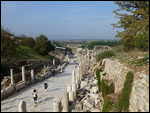

![The Bouleuterion [Council House] (100 AD)](images/thumbnail.large.1.1353343274.the-boulete.jpg)
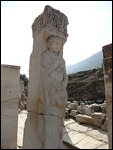

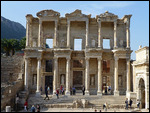
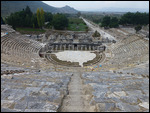
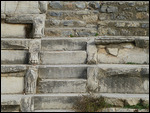


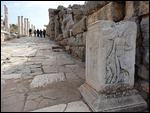
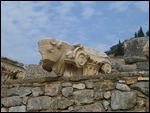
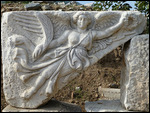
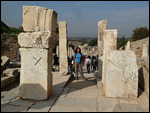
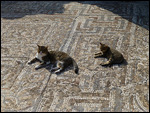
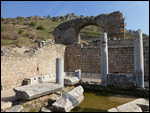


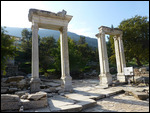
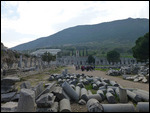

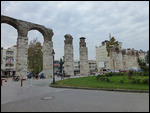
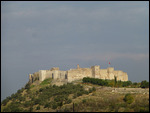

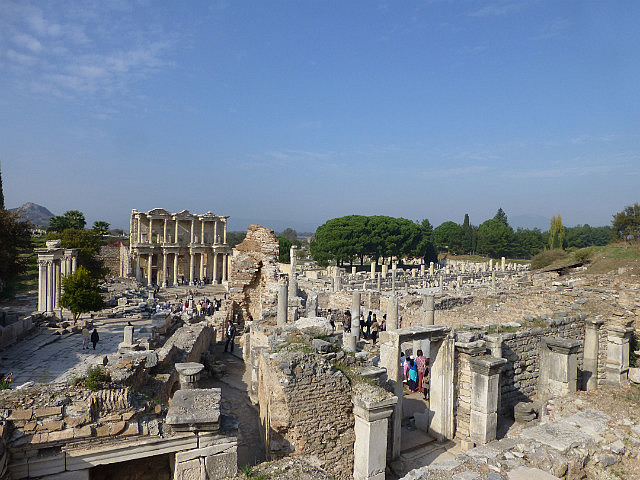
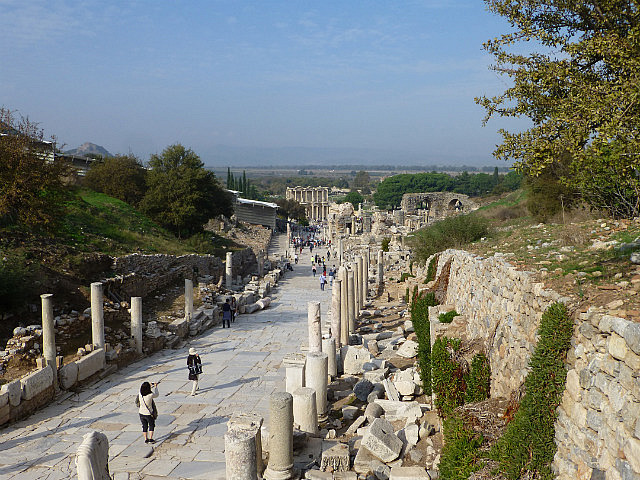
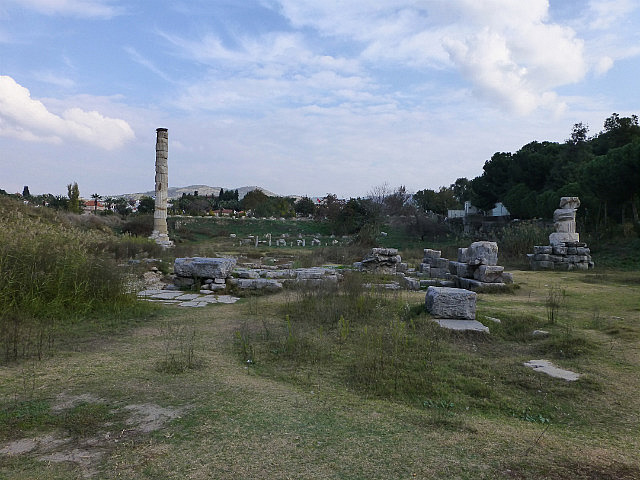
![The Bouleuterion [Council House] (100 AD)](images/1.1353343274.the-boulete.jpg)



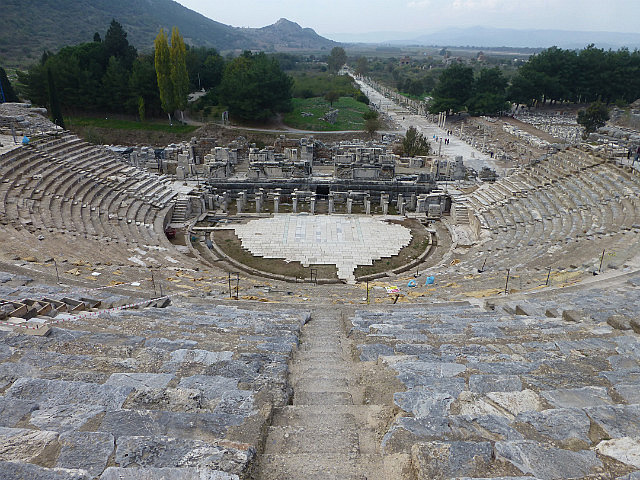


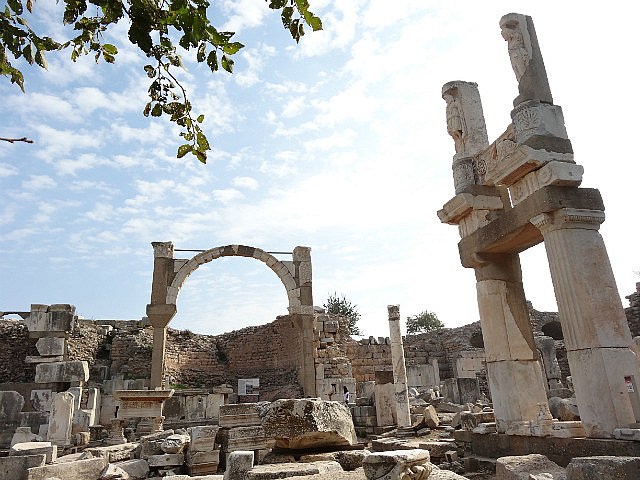

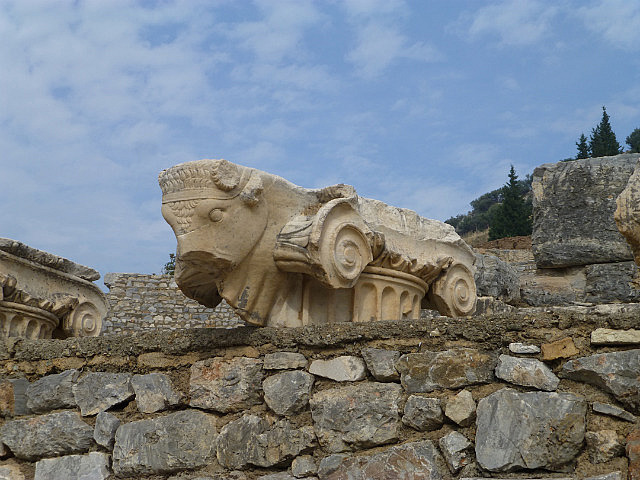
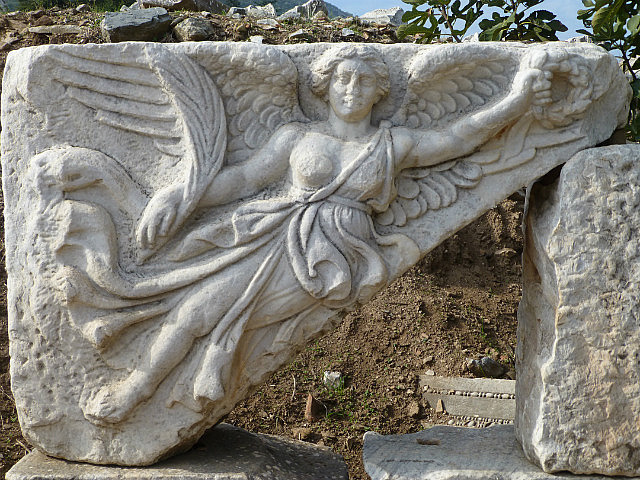
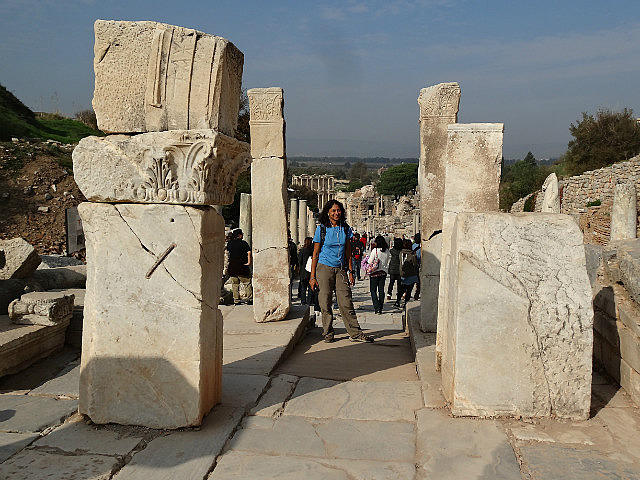


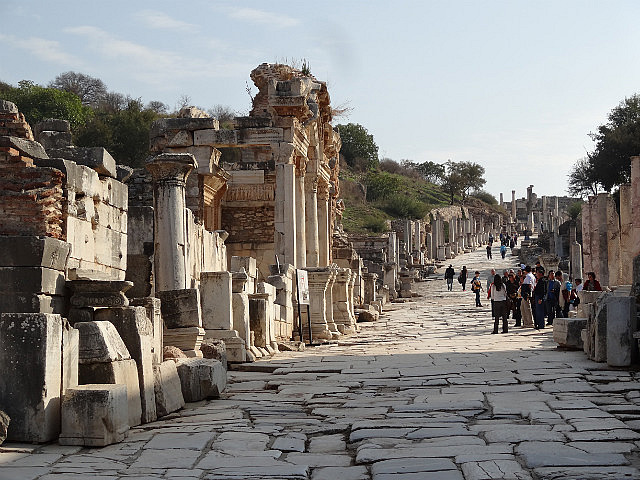

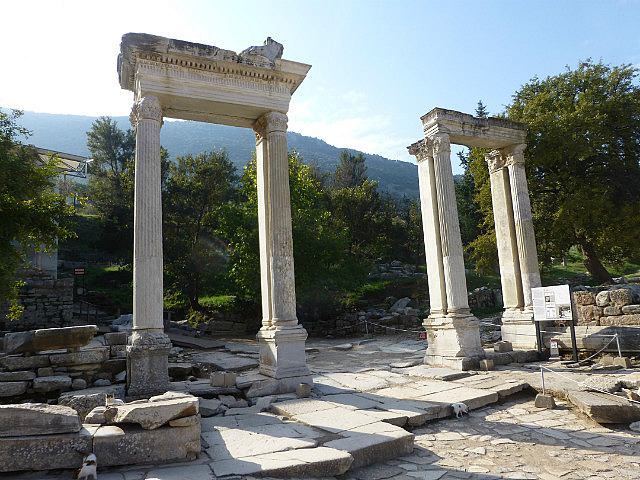
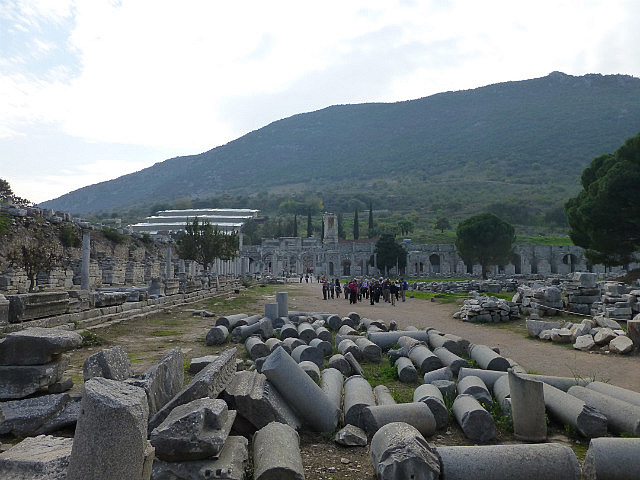




Comments